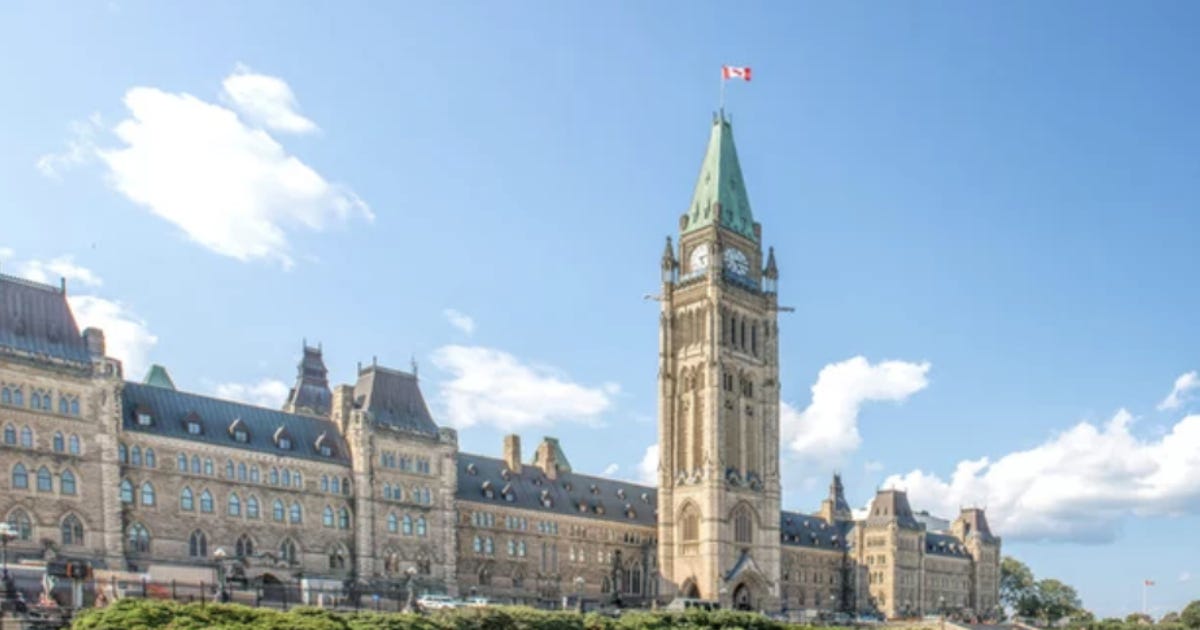Taxpayers could save $10B annually with cuts to federal workforce: report
A Montreal think tank is calling on Ottawa to cut its federal bureaucracy by 17.4 per cent, which would save taxpayers $10 billion annually and return spending to previously managed levels.
A Montreal think tank is calling on Ottawa to cut its federal bureaucracy by 17.4 per cent, which would save taxpayers $10 billion annually and return spending to previously managed levels.
The Montreal Economic Institute believes it’s time to take a “more ambitious” approach to reducing federal spending, urging the Carney government to adopt the Chrétien model from the 1990s.
“Canada’s economy is stagnant, and its fiscal outlook is grim,” said MEI’s senior public policy analyst Gabriel Giguère. “These are not just numbers on a page; this is debt taken out in our names, adding pressure on families already reeling from recent inflation.”
The federal government intends to cut program spending by 7.5 per cent in the fiscal year that begins April 1, 2026, followed by a 10 per cent reduction in 2027 and a further 15 per cent reduction in the 2028-29 fiscal year.
However, as the MEI study notes, that still isn’t expected to reduce total spending at this time. Additionally, a recent study published by the C. D. Howe Institute projects that Prime Minister Carney’s first budget could reach a $92-billion deficit for 2025–2026.
Therefore, the MEI is suggesting the Carney government eliminate 64,000 jobs, which would result in $10 billion in annual savings.
This would mirror how the Chrétien government dealt with ballooning deficits when it launched the Program Review in 1993. The review was designed to evaluate federal programs based on public need and fiscal capacity.
Following their evaluation, the program would then ultimately decide whether to retain, restructure or scrap certain bureaucratic positions.
Under Chrétien’s program, the size of the federal workforce dropped by 17.4 per cent by eliminating 42,000 employees who were not serving the public’s best interest.
Savings become particularly important when one considers that the previous government left office with a federal debt of $1.4 trillion after having failed to balance the budget in its nine years in power.
MEI noted that “rolling back recent programs could also yield substantial savings,” such as the federal dental program, which is projected to cost $13 billion over the next five years.
There is also the pharmacare program, which will cost $13.4 billion by 2027-28, despite healthcare following primarily under provincial jurisdiction.
“Government excesses combined with overregulation work in concert to strangle the economy,” said Giguère. “This is costing us jobs, investment, and government revenue.”
For example, federal regulations increased by 37 per cent between 2006 and 2021, reaching 320,000 in total.
According to Statistics Canada, these regulations reduced real GDP growth by 1.7 per cent, employment growth by 1.3 per cent, and labour productivity growth by 0.4 per cent.
Canada could have seen as much as 10 per cent more business start-ups in 2021, had Ottawa simply maintained its 2006 regulation levels.
The institute is also calling for a review of “targeted regulations” of key Canadian sectors such as the oil and gas industry.
“Ottawa’s oil and gas emissions cap, scheduled to take effect next year, aims to reduce emissions from this sector to 35 per cent below 2019 levels. Reports from Deloitte and the Parliamentary Budget Officer confirm that the cap would effectively act as a production cap,” said the MEI.
“Deloitte estimates that by 2040, this regulation would lower Canada’s GDP by one per cent, representing a $34.5-billion loss in constant 2017 dollars. The report also found the cap would cost 112,900 Canadian jobs by 2040.”
Furthermore, the PBO has projected that to meet the federal government’s emissions cap, oil and gas production would need to be reduced by 4.9 per cent more than its current forecasts over the next five to seven years.
“Our advice for Ottawa is to get out of the way,” said Giguère. “Our stagnating standard of living proves that government expansion across all areas does not produce economic prosperity, and doubling down on this approach will only make matters worse.”




At $80 billion a year for 450,000 sitting at home bureaucrats it would seem a 50% reduction in home sitters would save the Canadian taxpayer $40 billion simple math.
We could save many billions more if could dump the lieberals into the Atlantic.